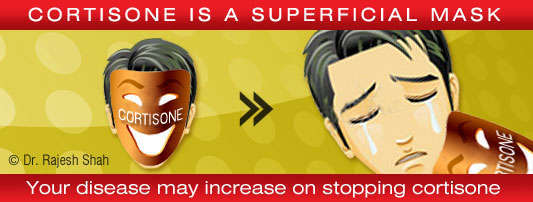Alopecia Areata: Conventional treatment
The following are some of the common treatments used for Alopecia Areata in conventional medical practice. These treatments may promote hair growth but none of them prevent new patches from appearing or actually cure the underlying disease; thus they are nothing more than temporary measures for treating Alopecia Areata:
- Cortisone: These drugs have strong anti-inflammatory action and they suppress the immune system if given orally so they are often used in the treatment of various autoimmune diseases, including Alopecia Areata. Corticosteroids may be administered in three ways for Alopecia Areata:
- As local injections in the affected area
- As oral medication
- As topical ointments
It is everyone's experience that cortisone application or injection may give initial improvement and the disease mostly returns after some days or months. Also, once it returns, it becomes more resistant to treatment. And, again you one is tempted to use cortisone, falling into the vicious cycle. Cortisone simply masks the immune disorder. Please click here to read about adverse effects cortisone.
- Minoxidil: Topical application of minoxidil solution is one of the commonest prescriptions for Alopecia Areata. Minoxidil is said to promote hair growth in several conditions in which the hair follicle is small and not growing to its full potential.
- Anthralin: Anthralin, a synthetic tar-like substance that is commonly used to treat Alopecia Areata. It is often used in combination with other treatments, such as corticosteroid injections or minoxidil.
- Oral cyclosporine: An immuno-suppressor drug, Cyclosporine is used in some cases of Alopecia Areata though it must be kept in mind that its side-effects include the risk of serious infection and possibly skin cancer. It must be noted that the dangers of this drug outweigh its benefits for Alopecia Areata.
- Sulfasalazine: Sulfasalazine acts on the immune system and it is used in severe cases of Alopecia Areata.
- PUVA treatment: In PUVA (also called photochemotherapy), a drug called a psoralen is applied topically or taken orally and then the alopecia patch is exposed to an ultraviolet light source.
- Alternative therapies: Alternative therapies commonly used by patients for Alopecia Areata include homeopathy, acupuncture, aromatherapy, evening primrose oil, zinc and vitamin supplements, and Chinese herbs.

Written & Approved by-
Dr. Rajesh Shah
M.D. (Hom.)